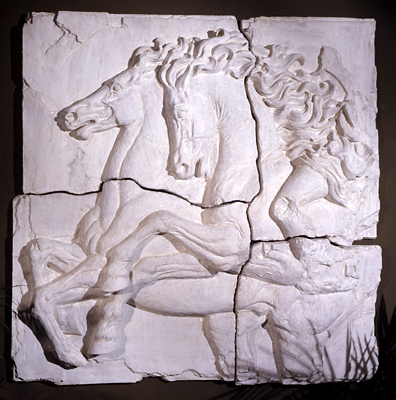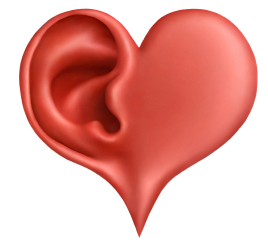
Learning to Listen II
"Noisy legs confuse the horse. The rider will think the horse is committing mistakes, which he is really causing himself, since the horse sometimes interprets the rider's motions as aids, when they are not intended to be aids, and at other times he will ignore them, although they are intended as aids." Adolph Kästner (1876)
You put your right leg in, you put your right leg out, you put your right leg in, and you shake it all about…try that. No, really, get up on your left leg, stick that right leg high up, and shake it for all you’re worth [feel free to look around to make sure no one can see you]. It’s not as easy as it sounds, is it? While we’re busy shaking a leg around, the other leg has the tremendous task of holding us upright, and it is more of a challenge than one might realize. Now, add some clapping, or perhaps some head patting and belly rubbing….how's it going?
Using aids independently is no small feat. Our seat has the job of keeping us stable, our spine, of keeping us upright. For some of us, staying upright on a horse is challenge enough. Next, add our left rear appendage (that would be a foot, ankle, calf, knee, thigh, and hip) and our left fore appendage (that would be several busy fingers, wrists, elbows, shoulders, and upper body). Oh yeah, and another set on the right side. We humans can be some busy little creatures, capable of hundreds of bends and angles and points of contact, thanks to the miracle of joints. Add a bit of muscular strength, put that busy little creature atop the horse, and interesting things develop. The human body is capable of infinite movements and postures, some of which will agree with the movement of a horse, and others which do not.
You put your right leg in, you put your right leg out, you put your right leg in, and you shake it all about…try that. No, really, get up on your left leg, stick that right leg high up, and shake it for all you’re worth [feel free to look around to make sure no one can see you]. It’s not as easy as it sounds, is it? While we’re busy shaking a leg around, the other leg has the tremendous task of holding us upright, and it is more of a challenge than one might realize. Now, add some clapping, or perhaps some head patting and belly rubbing….how's it going?
Using aids independently is no small feat. Our seat has the job of keeping us stable, our spine, of keeping us upright. For some of us, staying upright on a horse is challenge enough. Next, add our left rear appendage (that would be a foot, ankle, calf, knee, thigh, and hip) and our left fore appendage (that would be several busy fingers, wrists, elbows, shoulders, and upper body). Oh yeah, and another set on the right side. We humans can be some busy little creatures, capable of hundreds of bends and angles and points of contact, thanks to the miracle of joints. Add a bit of muscular strength, put that busy little creature atop the horse, and interesting things develop. The human body is capable of infinite movements and postures, some of which will agree with the movement of a horse, and others which do not.

"The disability from which I suffer is a great handicap, but there is a bright side to everything and my inability to apply the aids strongly has been a great lesson to me. I can use but very little force, and the results obtained by my weak efforts have convinced me that horses are generally over ridden; that much more strength than necessary is habitually used in applying the aids. The rider must reduce his actions to the very minimum and leave the horse the greatest possible freedom in his." Beudant
I don’t think of riders in terms of “good” riders or “bad” riders. I see riders and handlers with varying degrees of attentiveness. Are they paying attention to themselves, the way they are balanced in the saddle? Are they aware of what parts of their own body are making contact with the horse? Can they feel, when they shift their own balance, how the equilibrium of the horse changes also? Can they use, say, their left hip, without disturbing the horse’s side, or any other part of his body, or disturbing the reins? Do their own legs coincide with what the horse’s legs are doing, their own body agree with the direction of travel? If handling a horse from the ground, does the person know where their own feet are, where their feet need to be, to not obstruct the horse’s movement and line of travel? What is their own body language saying to the horse? The more attentive a rider or handler is to their own body, the more she can receive, and manage, and direct. Attentiveness translates to control, and control, to grace. As a hearing impaired person has trouble dancing gracefully to music, the “deaf” rider, who doesn’t know how to read and feel his own body, is at a disadvantage, both of grace, and of basic safety.
" Understand that ... I mean to indicate a person gifted with a certain ability, and sufficiently educated in equitation to promptly differentiate the correct or false, submissive or rebellious movements, of the steed whom he wants to direct. Without this tact, this kind of equestrian touch, there is no accomplishment, no safety for the horseman, since, not being able to feel the displacements of the horse, he would not be able to prevent them; but if he possesses this sensitivity which lets none of the animal's contractions escape it, he can, with ease, not only follow, but even prevent most defenses...Horses cannot defend themselves without a prior moment of hesitation. This principle, justified by practice and theory, is of the greatest importance for the horseman." Baucher
Ideal, graceful and safe movement atop a horse means being attentive to a million little pieces at once. Not only are there a million little pieces, but they’re all moving pieces, and directed by two separate brains and nervous systems. Collecting and managing all these forces is impossible, because they are infinite in number. The best we can hope for is to control enough of these pieces, to move swiftly, safely, efficiently, together. Developing our own powers of attention, internally and externally, to follow and to lead, is at the heart of the art of horsemanship.
" Understand that ... I mean to indicate a person gifted with a certain ability, and sufficiently educated in equitation to promptly differentiate the correct or false, submissive or rebellious movements, of the steed whom he wants to direct. Without this tact, this kind of equestrian touch, there is no accomplishment, no safety for the horseman, since, not being able to feel the displacements of the horse, he would not be able to prevent them; but if he possesses this sensitivity which lets none of the animal's contractions escape it, he can, with ease, not only follow, but even prevent most defenses...Horses cannot defend themselves without a prior moment of hesitation. This principle, justified by practice and theory, is of the greatest importance for the horseman." Baucher
Ideal, graceful and safe movement atop a horse means being attentive to a million little pieces at once. Not only are there a million little pieces, but they’re all moving pieces, and directed by two separate brains and nervous systems. Collecting and managing all these forces is impossible, because they are infinite in number. The best we can hope for is to control enough of these pieces, to move swiftly, safely, efficiently, together. Developing our own powers of attention, internally and externally, to follow and to lead, is at the heart of the art of horsemanship.
5.18.12 TME
return to Educated Edquestrian
return to Educated Edquestrian